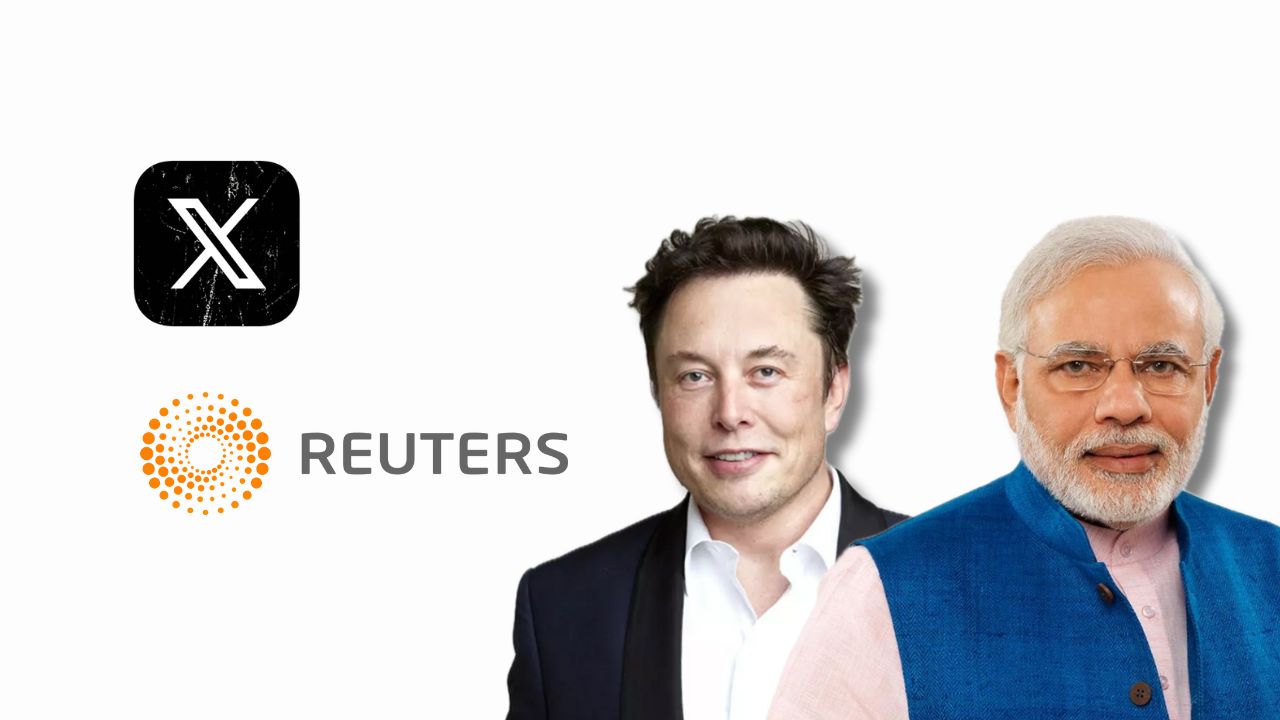Reuters’s main account, with over 2.5 crore users globally, was blocked in India late on Saturday, 5 July. A notice on the platform stated that the handle had been “withheld in IN (India) in response to a legal demand.”
Published Jul 08, 2025 | 5:32 PM ⚊ Updated Jul 08, 2025 | 5:32 PM

X said the Union government asked the company to reverse the block on Reuters accounts following public backlash.
Synopsis: Social media platform X has contradicted the Indian government’s claim that it did not request the blocking of Reuters accounts, stating it received a direct order under Section 69A of the IT Act to block over 2,300 accounts, including @Reuters and @ReutersWorld. The platform said the July 3 directive came with threats of criminal penalties and no explanation, and was later reversed following public outcry.
US-based social media platform X has stated it received a direct and urgent takedown order from the Indian government to block over 2,300 accounts, including those of international news agency Reuters – contradicting the Centre’s claim a day earlier that it had not sought such action.
In a statement issued on Tuesday, 8 July, X’s Global Government Affairs team said the directive was issued on 3 July under Section 69A of the Information Technology Act, 2000, and included instructions to block both @Reuters and @ReutersWorld.
X said the order came with a threat of criminal penalties for non-compliance and was issued without any further explanation.
“On July 3, 2025, the Indian government ordered X to block 2,355 accounts in India, including international news outlets like @Reuters and @ReutersWorld, under Section 69A of the IT Act. Non-compliance risked criminal liability. The Ministry of Electronics and Information Technology demanded immediate action – within one hour – without providing justification, and required the accounts to remain blocked until further notice,” the statement said.
On July 3, 2025, the Indian government ordered X to block 2,355 accounts in India, including international news outlets like @Reuters and @ReutersWorld, under Section 69A of the IT Act. Non-compliance risked criminal liability. The Ministry of Electronics and Information…
— Global Government Affairs (@GlobalAffairs) July 8, 2025
The disclosure comes just a day after the Press Information Bureau told Reuters that “no Indian agency had asked for the Reuters account to be withheld” and that they were “working with X to resolve the problem”.
Reuters’s main account, with over 2.5 crore users globally, was blocked in India late on Saturday, 5 July. A notice on the platform stated that the handle had been “withheld in IN (India) in response to a legal demand.”
The account was restored on Sunday. Reuters World was also reinstated the same night.
X also said the Union government later asked the company to reverse the block on Reuters accounts following public backlash.
“After public outcry, the government requested X to unblock @Reuters and @ReutersWorld,” the company said.
X has further raised concerns about what it described as “ongoing press censorship in India,” and said it was exploring legal remedies, while noting its own limitations in challenging executive orders under Indian law.
“We are deeply concerned about ongoing press censorship in India due to these blocking orders. X is exploring all legal options available. Unlike users located in India, X is restricted by Indian law in its ability to bring legal challenges against these executive orders. We urge affected users to pursue legal remedies through the courts,” the company stated on Tuesday.
In March, the Elon Musk-owned company filed a petition in the Karnataka High Court challenging the legal framework used by the Union government to direct content removals on social media platforms.
It argued that the government’s use of Section 79(3)(b) of the IT Act, along with the Sahyog Portal, creates “an unregulated censorship mechanism that bypasses established legal procedures.”
Section 79 of the IT Act generally shields intermediaries – such as social media platforms – from liability for content posted by users. However, this protection can be withdrawn under Section 79(3)(b) if they fail to remove unlawful content upon receiving actual knowledge via a court order or government notification.
In its petition, X Corp claims the government is misapplying this provision to issue takedown orders without adhering to the procedural safeguards required under Section 69A – such as recording reasons in writing, giving a pre-decisional hearing, and allowing for legal recourse.
In the 2015 Shreya Singhal v. Union of India judgment, the Supreme Court upheld Section 69A as the only legal route for blocking online content, noting that it was a “narrowly drawn provision with several safeguards.”
The Sahyog Portal is intended to speed up the content removal process by enabling state and central law enforcement agencies – including local police – to issue takedown requests. X Corp argues that the portal provides a “template blocking order,” sidestepping Section 69A and violating the apex court’s ruling.
The case is currently ongoing.
(Edited by Dese Gowda)
